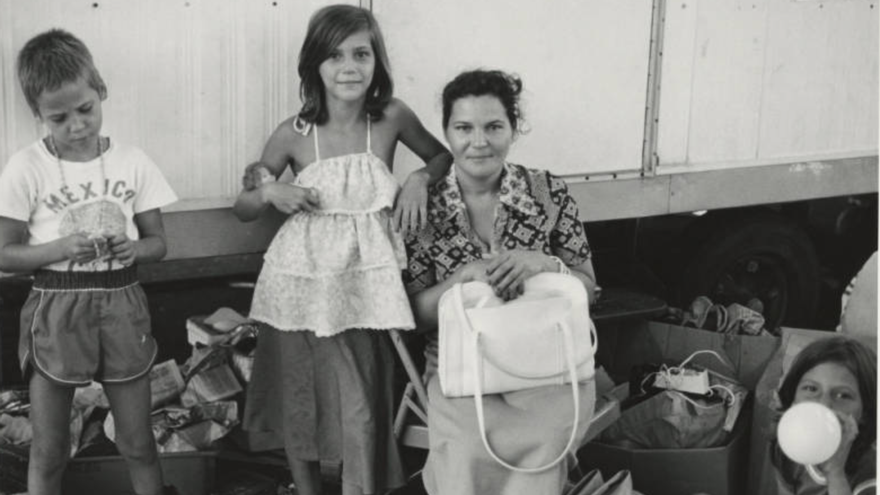
![]() EFE (via 14ymedio), Jorge Ignacio Pérez, Miami, 16 April 2020 — “The greatest possible change in my life,” is how the journalist Hugo Landa describes to Efe the trip that finally took him out of Cuba, along with 125,000 compatriots, during the ’maritime bridge’ from Cuba’s Port of Mariel to Florida’s Key West. It will be 40 years this Wednesday since the first of 2,000 vessels left Cuba for the United States in what came to called, in the US, the Mariel Boatlift.
EFE (via 14ymedio), Jorge Ignacio Pérez, Miami, 16 April 2020 — “The greatest possible change in my life,” is how the journalist Hugo Landa describes to Efe the trip that finally took him out of Cuba, along with 125,000 compatriots, during the ’maritime bridge’ from Cuba’s Port of Mariel to Florida’s Key West. It will be 40 years this Wednesday since the first of 2,000 vessels left Cuba for the United States in what came to called, in the US, the Mariel Boatlift.
Today director of Cubanet, the oldest digital publication of Cuban affairs (1994) published in Miami, Landa tells Efe that most of the asylum seekers sheltering in the Peruvian embassy were “included as ’antisocials’ among the people that the dictatorship forced the exiles who sailed to Cuba to collect their relatives, to also take in their boats.”
The Mariel exodus was a consequence of the violent entry of six Cubans into 1980 into the Peruvian embassy in Cuba to ask for political asylum, which was granted. In retaliation, the Cuban authorities withdrew the surveillance and protection of that diplomatic mission, which then received more than 10,800 people in four days, Landa among them.
Shortly after, then president Fidel Castro, announced the opening of the port of Mariel, about 40 kilometers from Havana, for anyone who wanted to leave Cuba.
Landa came to a city not as populated as it is now and much more limited in its urban layout compared to today. “For Miami, it must have been very difficult to assimilate that avalanche of refugees who arrived in just 5 months,” he reflects.
“We must also bear in mind that, at that time, the United States was going through a deep economic crisis, with great unemployment and inflation. I remember that everyone told us ’things here are bad’, something that I never understood because there was no ration book and everything seemed wonderful to me,” he recalls.
In some 2,000 small-draft vessels, entire families arrived with him to the United States, but others also arrived who left their loved ones behind and in some cases never saw them again.
The Mariel Boatlift was an escape valve that Castro used to send not only dissidents, but also people who were serving sentences and were removed from jails on the condition that they would permanently leave the country.
The documentary In their own words (1980), by the filmmakers Jorge Ulla and Lawrence Ott, Jr., collected the impressions of those Cubans who set foot on American soil after a dangerous journey, crowded into small boats, including the writer Reinaldo Arenas (1943 -1990).
The condition set for those who came from Florida to pick up their relatives in small boats, was that their yachts had to leave full and officials filled them with people they had never seen before.
“It is true that among the refugees were criminals infiltrated into the exodus by the regime who, as expected, began to do their thing,” says the journalist.
Landa says that “criminals were only a small minority, but they were the ones who appeared on the newscast, because the newscasts do not normally report on people who get up every day to go to a factory to work.”
For the director of Cubanet, “there are many successful Marielitos that one meets in all spheres of life in the United States.”
“Those who arrived as children are already around or over 50 years old and are like any ’American’. I arrived young, at 27 years old, and I am already 67,” he explained.
“All of us from the Mariel exodus knew that there was no return to Cuba, not even as tourists, because the dictatorship did not allow it until almost 20 years passed, I think that is why we are fully focused on living and progressing here,” said the journalist.
The Mariel sea bridge lasted six months, two weeks and two days, from April 15 to October 31, 1980.
Previously, Cuba had carried out a similar operation during the maritime bridge known as “Camarioca,” in 1965, during the government of the then US President Lyndon Johnson.
_______________
COLLABORATE WITH OUR WORK: The 14ymedio team is committed to practicing serious journalism that reflects Cuba’s reality in all its depth. Thank you for joining us on this long journey. We invite you to continue supporting us by becoming a member of 14ymedio now. Together we can continue transforming journalism in Cuba.
